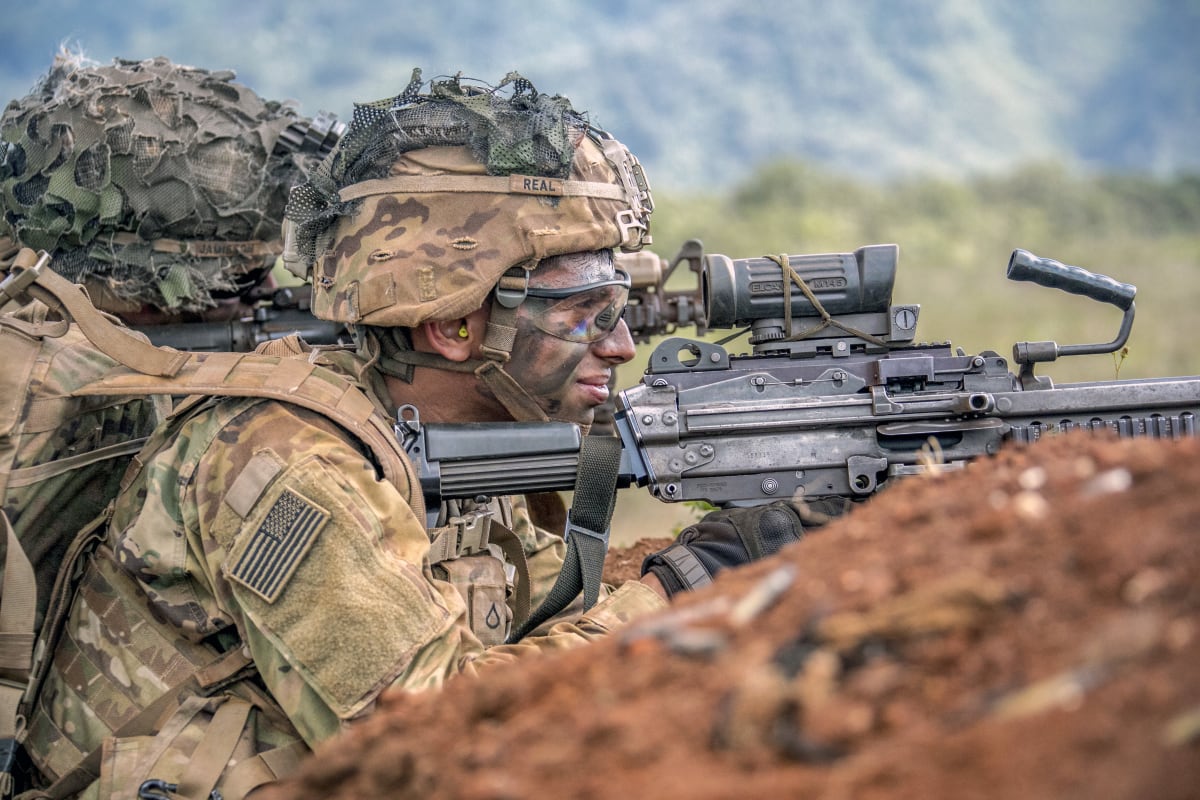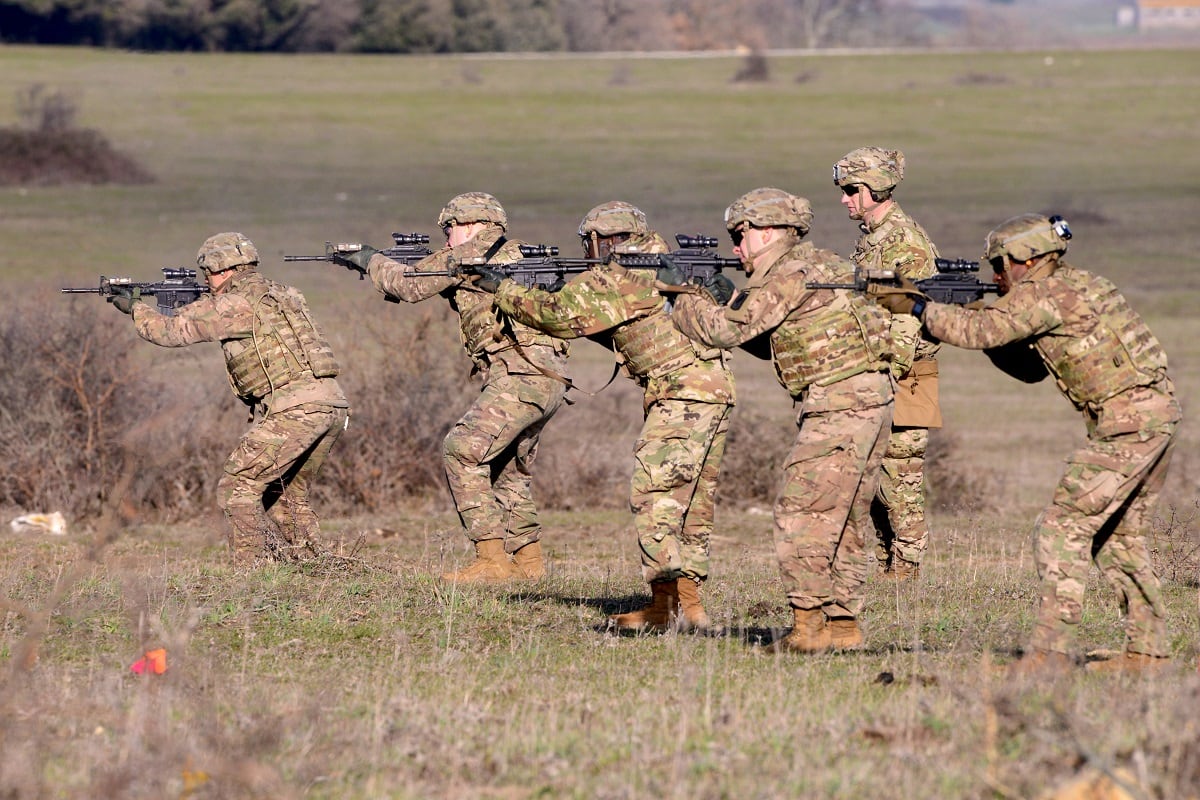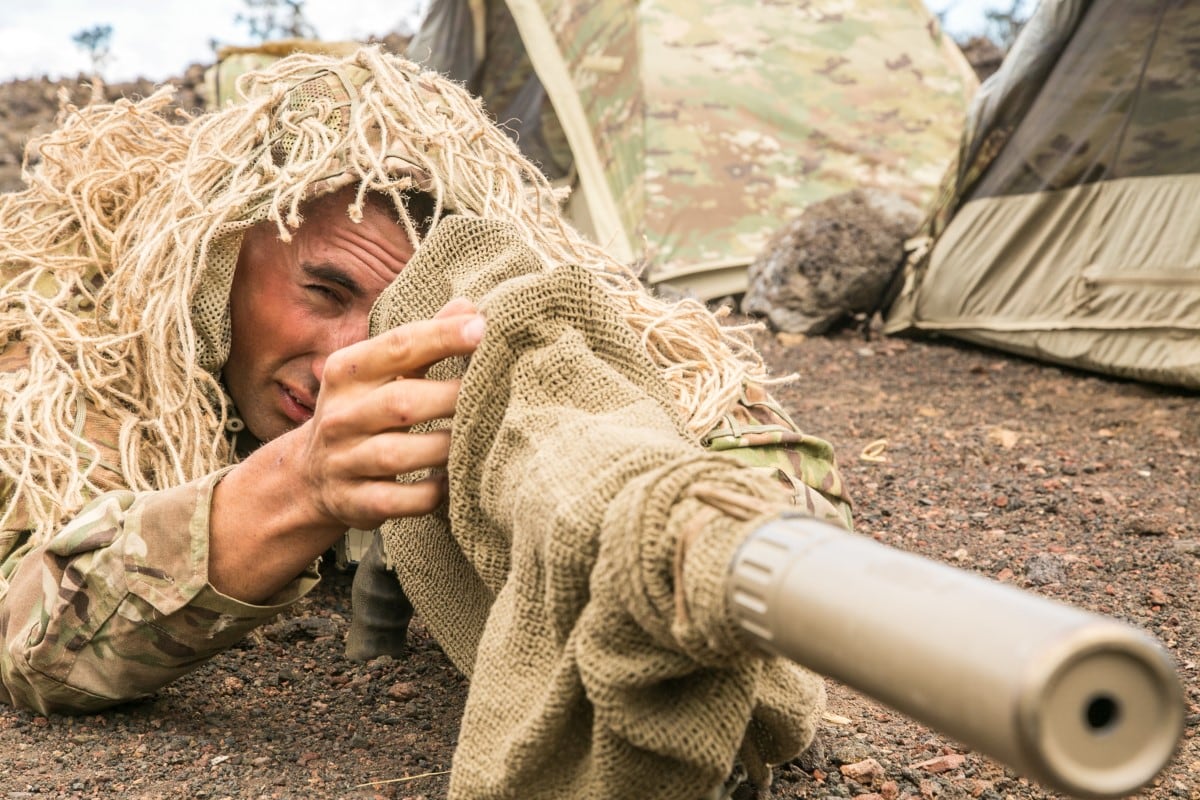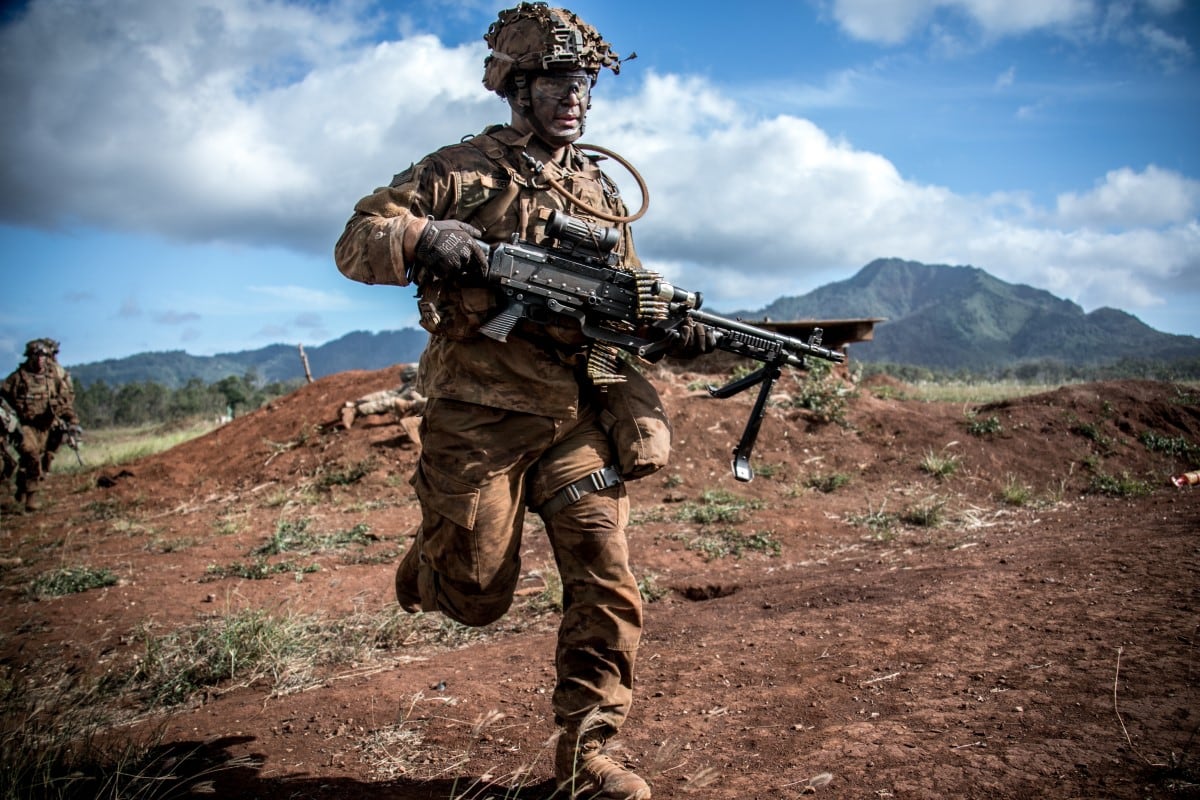In less than a year, a new task force formed at the direction of the Pentagon’s most senior leaders is pushing key equipment programs and putting personnel policies under a microscope — all to take close combat units to the “next level” of war-fighting overmatch.
Long pushed aside on the list of priorities, the infantry squads, scouts and combat engineers that do the close, dirty and violent work of war are now being considered on par with traditional attention hogs such as the newest tanks, missiles and jet fighters.
Though the dollar amounts devoted to these ranks have risen — $2.5 billion has been shifted to pay out over the next five years to feed the Close Combat Lethality Task Force’s overmatch mission — the lasting effects of the work will play out in the form of personnel policies ranging from how the services get the best people they can into these formations to ways to keep and train them better than they ever have before.
Secretary of Defense Jim Mattis established the CCLTF with a memorandum at the start of this year, but the former infantry officer’s interest in the squad as the linchpin of the fighting force goes back decades.
The man that Mattis chose to direct the task force, Joe L’ Etoile, himself a retired Marine lieutenant colonel and infantry unit commander, sat down with Army Times ahead of the Association of the United States Army’s annual meeting to review some of the task force’s early work and what’s ahead.
But for all the work that’s going on, L’ Etoile emphasized a major point: this work isn’t a critique of the existing formations.
“The infantry is not broken. It’s the best in the world, lethal, effective, cohesive,” he said. “The Close Combat Lethality Task Force is just taking it to the next level.”
For more coverage from the AUSA annual meeting, click here.
Leap-ahead equipment
Beginning as it did during defense budget drafting, much of the work these first few months has put energy, funding and the momentum of the defense secretary’s office behind key initiatives already in development.
Namely, the task force is helping the Army get backing at high levels for its Next Generation Squad Weapon program and Integrated Visual Augmentation System.
If successful, the two programs will hit several goals at the top of the Army’s lethality checklist by making individual soldier weapons more precise, shoot at farther ranges with more lethality and feed battlefield information to the warfighter at unprecedented tactical detail.

The NGSW is a program to first replace the M249 Squad Automatic Weapon through the Next Generation Squad Automatic Rifle vein of the program. It will be followed closely by an identical caliber rifle or carbine meant to replace the M4 carbine.
The new caliber is likely to fall in the intermediate range, between the existing 5.56mm and 7.62mm ammunition the military uses now. It will offer better accuracy and lethality but with a lighter recoil than the heavier 7.62mm bullet and provide a similar configuration for carrying capacity and weight as the lighter 5.56mm bullet.
But the NGSW aims to do more than provide a better bullet and rifle, L’ Etoile said. A crucial piece of improving the weapon system is the fire controls.
That’s where the Integrated Visual Augmentation System, or IVAS, comes into the discussion.
The IVAS puts the weapon sight, navigation and battlefield information — such as locations of friendly and enemy formations — all within the visual display of the user.
Think Blue Force Tracker shrunk down to the goggle level, paired with the addition of targeting data and more detailed communications functions.
Right now, the information system comes within a smartphone device centered in the Army’s Nett Warrior program, but the goal has nearly always been to move that heads-down device into the sight picture of the soldier in the form of a head-up display.
And what’s more intriguing about the IVAS is its application both in training and in actual combat. The new system will not only be the digital device troops train on but also the one they deploy overseas with, L’ Etoile said.
A version of that is under development and testing at Army research sites. The task force is using its pull to work with Army leadership to speed up those efforts.
RELATED

‘The human side’
But both L’ Etoile and task force adviser retired Maj. Gen. Robert Scales told Army Times that while the materiel solutions get much of the attention, it’s bringing best practices to recruiting, retaining, training and developing the individuals within the squad that are both the most difficult and the most beneficial in the long-term battle to gain and maintain overmatch.
“We’ve discovered, increasingly, it’s all about the human side,” Scales said. “Manning, policies, training, selection, recruiting, testing, evaluation, immersions.”
That’s come with a host of options for tweaks and potential changes.
Currently, task force members are gathering “best practices” data from special operations units both domestic and foreign. They’ve visited the 75th Ranger Regiment and the Israel Defense Forces and have trips scheduled to evaluate other professional close combat units among allied militaries.
“What are the aspects of Delta Force, SEALs, recon, MARSOC, Rangers that are already exceptional in the classical sense?” Scales said. “What are the key elements we can translate efficiently?”
On that front, L’ Etoile said that task force members are also leveraging decades of brain science research to look at the attributes that make for a top-level close combat individual.
“It’s hard to find the X factor that makes someone more lethal,” L’ Etoile said. “Some individuals are better suited to the brutally lethal and extremely violent nature of close combat than others.”
L’ Etoile didn’t provide specific timelines for when some of the in-person information and big data analytics being used to evaluate close combat unit manning could be made public. He did say to expect to see changes to squad lethality as early as next year.

However, he added that manpower concerns are a “real challenge that have second and third order effects,” he said.
At a wider level, those challenges exist across the non-combat portions of the formations as well. All the services want to grow their cyber formations and build out better electronic warfare and intelligence forces.
The Marine Corps is offering unprecedented bonuses and incentives for its squad leaders, especially those who have completed or will complete the infantry squad leader course.
The Corps has long monitored both the “assigned” and “on hand” strength of its squads, but it is now diving even deeper to find ways to keep those squads filled with qualified Marines.
Meanwhile, the Army is using its “Objective T” program to require more than 75 percent of unit personnel to qualify on a training event, or it doesn’t count.
Those shifts in manpower prioritization are helping the military find ways to keep combat arms troops in their units and not be assigned out to non-lethality enhancing duties such as life guard, tax center or cleanup details that have historically soaked up grunts for non-grunt jobs at the expense of training.
“If you prioritize the lethality of the squad, all of those other pernicious problems really fall away,” L’Etoile said.
Mastering the basics
Once the right people are in the formations and stay there to do their jobs, they have to be trained.
That’s a key element of how the task force can help prioritize and push the services toward training objectives.

A lot of the tech efforts in that area are going into the Army’s Synthetic Training Environment simulations programs and cross-functional team. On the Marine Corps side, there’s a parallel program aiming to improve Live Virtual Constructed Training Environments, a kind of mashup of digital gaming and real-world training.
Those both fall under what are often called “blended environments.” And that’s where more progress in small unit training can take place, L’ Etoile said.
The Army and Marine Corps' large-scale combat training centers have only so much capacity and are geared for battalion or brigade-sized unit rotations.
Those are important and will continue to be premiere training events, but by using fully manned squads at home station with qualified leaders and “blended environments,” units can achieve mastery of tactical proficiency at an exponential rate.
As recently as this summer, hands-on, combat theater training efforts saw an injection of an estimated $572 million to train up more than three quarters of the Army’s brigade combat teams to fight underground.
L’ Etoile pointed to the effort as one that fit the exact definition of overmatch that the task force wants to help the services achieve with their close combat formations.
With U.S. troops' ability to force opponents into subterranean areas to avoid air power, targeting and intelligence, it stands to reason enemies will go underground, he said.
And the core mission of the close combat units to “find, fix and finish” the enemy means that they’ll be the ones headed down there to fight, he said.
Todd South has written about crime, courts, government and the military for multiple publications since 2004 and was named a 2014 Pulitzer finalist for a co-written project on witness intimidation. Todd is a Marine veteran of the Iraq War.





